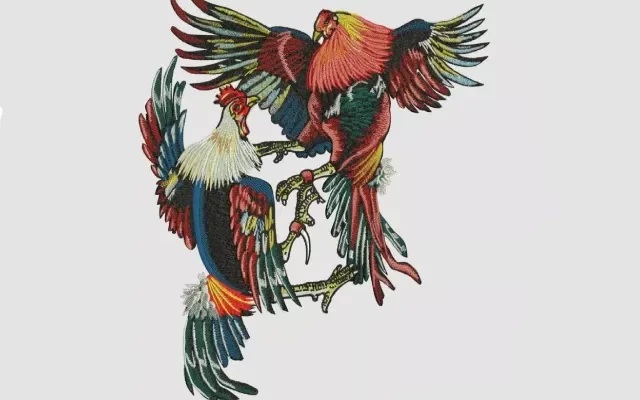
Branding is an essential aspect of any business, and for restaurants, creating a cohesive and recognizable image is key to leaving a lasting impression on customers. One of the simplest yet most effective ways to incorporate branding into a restaurant is through custom embroidered napkins. These small details help communicate the restaurant’s identity and add a professional touch to the dining experience. In this article, we will explore how to design and embroider napkins for restaurant branding, and the techniques you can use, including the use of manual vectorization to achieve precise embroidery. We’ll also discuss how similar strategies apply to headwear products, such as custom embroidered hats for restaurant staff, and include FAQs to guide you through the process.
Why Embroidered Napkins are Ideal for Restaurant Branding
Custom embroidered napkins are not just functional table accessories; they are powerful branding tools. Here’s why they matter in restaurant branding:
- Professionalism: Embroidered napkins enhance the overall presentation, signaling attention to detail.
- Brand visibility: When designed with your restaurant’s logo or name, napkins serve as a subtle yet effective branding element that customers notice.
- Memorability: Unique, well-designed napkins help create a lasting impression, encouraging repeat business.
- Durability: Embroidery is long-lasting and withstands frequent washing, making it a sustainable branding option.
By investing in custom embroidering on napkins, restaurants can take their table settings to the next level while reinforcing their brand identity.
Steps to Design and Embroider Napkins for Restaurant Branding
1. Understand Your Brand Identity
Before you even begin designing, it’s important to have a clear understanding of your restaurant’s brand identity. Ask yourself the following:
- What message do I want my restaurant to convey? Whether it’s upscale, casual, family-friendly, or gourmet, the design should reflect the atmosphere of the restaurant.
- Who is my target audience? The design and embroidery should appeal to your target demographic. A fine dining restaurant may opt for elegant monograms, while a casual café might go for playful patterns.
- What are my brand colors and logo elements? Consistency is key. Choose embroidery thread colors that align with your brand’s color scheme and ensure that any logos or symbols are clearly represented in the design.
2. Choose the Right Fabric for Napkins
Napkins are available in various fabrics, but not all fabrics are ideal for embroidery. Linen and cotton are two of the most popular options due to their durability and ability to hold embroidery stitches well. Here’s why:
- Linen napkins: Linen is a luxurious and sturdy material, perfect for high-end restaurants looking to create a refined look. It holds up well under repeated washing and offers a natural texture that complements embroidery.
- Cotton napkins: Cotton is a more affordable option and also works well for embroidery. It’s absorbent and can handle the frequent laundering that restaurant napkins require.
Avoid thin or stretchy materials, as they may not hold embroidery stitches properly or may distort the design.
3. Select Your Embroidery Design
Once you’ve defined your brand identity and chosen the fabric, it’s time to select your embroidery design. This is where manual vectorization comes into play. Vectorization is the process of converting your restaurant’s logo or design into a format that can be used for embroidery.
- Manual vectorization ensures that every detail of your logo is accurately captured and can be translated into stitches. This process creates high-quality, scalable designs, which is essential when switching between various product sizes, such as napkins and headwear products like hats or visors for restaurant staff.
Common design options include:
- Restaurant logos: Logos work best if they are simple, as intricate designs may become difficult to read on small surfaces.
- Monograms: If your restaurant has a formal dining setting, monograms using the restaurant’s initials can create a classy look.
- Patterns or motifs: Use custom patterns that reflect the theme or cuisine of your restaurant, such as floral motifs for a garden-themed restaurant or abstract designs for a modern eatery.
4. Use the Right Embroidery Techniques
To achieve professional-looking napkins, it’s important to use the right embroidery techniques:
Stabilizing the Fabric
Linen and cotton napkins are relatively easy to work with, but stabilizers are essential to prevent puckering and distortion. Choose a stabilizer based on the fabric and design:
- Tear-away stabilizer: Ideal for simple designs and monograms. It is easy to remove after stitching.
- Water-soluble stabilizer: Perfect for intricate logos, as it dissolves completely after embroidering, leaving no traces behind.
Hooping
Hooping is crucial for ensuring your embroidery design stitches evenly. Follow these steps:
- Place the napkin in the embroidery hoop, ensuring it is taut but not stretched.
- Smooth out any wrinkles and align the fabric so that the design will be centered on the napkin.
Embroidery Thread
Choose thread colors that match your brand’s palette. Polyester embroidery thread is a durable option, offering vibrant colors that are resistant to fading, even with frequent washing.
5. Adding Branding to Headwear Products
Alongside napkins, headwear products like caps, visors, or beanies can be a fantastic way to extend your restaurant’s branding. Whether for kitchen staff, servers, or promotional purposes, embroidered headwear reinforces your brand’s visibility.
The embroidery process for headwear is similar to napkins, with a few key differences:
- Cap-specific hoops: Use hoops designed for embroidering headwear, as they hold the curved surface securely.
- Center-out stitching: Always begin stitching from the center of the design to prevent fabric distortion on curved surfaces.
- Simple designs: Like napkins, simpler designs are more effective on headwear due to limited space.
By using manual vectorization, the same logo or design can be resized and applied to both napkins and headwear, ensuring consistent branding across multiple products.
6. Care and Maintenance of Embroidered Napkins
After embroidering your napkins, it’s important to care for them properly to ensure they last. Here are some care tips:
- Washing: Machine wash the napkins in cold water on a gentle cycle. Avoid harsh detergents, as they can damage the embroidery.
- Drying: Air-dry or tumble dry on low heat. High heat can cause shrinkage, which may distort the embroidery.
- Ironing: If needed, iron the napkins on a low setting. Place a cloth over the embroidered area to protect the stitches.
7. Enhancing the Dining Experience with Custom Embroidered Napkins
Custom embroidered napkins add a level of sophistication and personalization to your restaurant’s table settings. They can make a huge difference in customer perception by enhancing the dining experience. Here are a few ways embroidered napkins contribute to restaurant branding:
- Personal touch: Guests notice the details, and embroidered napkins show that your restaurant goes the extra mile to create a refined atmosphere.
- Instagram-worthy: In today’s social media-driven world, diners often share their experiences online. Beautifully embroidered napkins make for eye-catching Instagram photos, providing free marketing for your restaurant.
- Memorability: Branded napkins contribute to the overall experience and help make your restaurant more memorable, encouraging repeat customers.
Conclusion
Designing and embroidering napkins for restaurant branding is a highly effective way to enhance the dining experience while promoting your restaurant’s identity. By incorporating key techniques such as manual vectorization and proper embroidery methods, you can create custom napkins that elevate your brand’s image. Additionally, extending your branding to headwear products ensures a cohesive and professional appearance across all aspects of your restaurant.
FAQs: Designing and Embroidering Napkins for Restaurant Branding
1. What is the best fabric for embroidered napkins?
Linen and cotton are ideal fabrics for embroidered napkins. They are durable, absorbent, and can handle frequent washing, making them perfect for restaurant use.
2. How do I convert my restaurant logo into an embroidery design?
To convert your logo into an embroidery design, use manual vectorization. This process ensures that your logo is accurately translated into a digital format suitable for embroidery machines.
3. Can I embroider detailed logos on napkins?
Yes, but it’s important to simplify the design as much as possible. Fine details may get lost on smaller surfaces, so focus on key elements of the logo. Use vectorization to ensure precision.
4. What kind of thread should I use for restaurant napkins?
Polyester embroidery thread is recommended for restaurant napkins. It is durable, resistant to fading, and withstands frequent washing.
5. How can I maintain the quality of embroidered napkins?
Wash embroidered napkins in cold water on a gentle cycle and avoid harsh detergents. Air-dry or use low heat when tumble drying to prevent shrinkage. Always iron the embroidered area with a cloth to protect the stitches.
6. Can the same design be used for napkins and headwear products?
Yes, by using manual vectorization, you can resize and adjust the design to fit both napkins and headwear products like caps or visors, ensuring consistent branding across different items.










